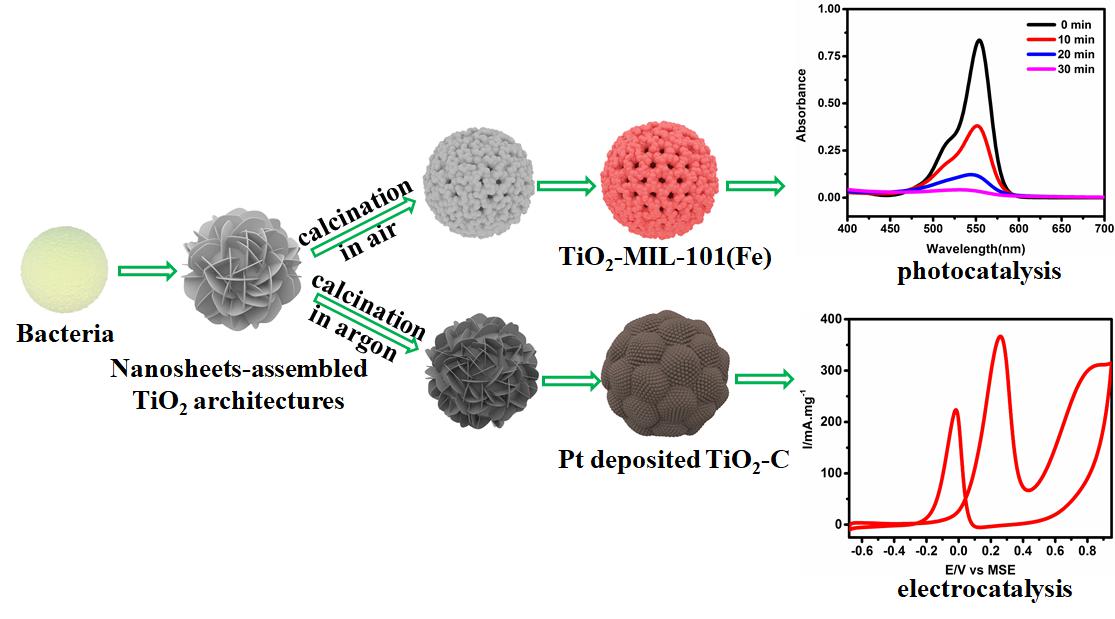Recently, ACS Applied Materials & Interfaces has published an online article entitled “Bacteria-Assisted Synthesis of Nanosheet-Assembled TiO2 Hierarchical Architectures for Constructing TiO2 Based Composites for Photocatalytic and Electrocatalytic Applications” , which reports the latest research done in collaboration with Laboratory of Chemo/Biosensing of College of Science of HZAU and Advanced Materials and Green Catalysis research team. Based on biotechnology, the research has put forward a new, simple and feasible method to synthesize TiO2 catalysts with better catalytic performances, making it possible for mass production and application of TiO2 opoelectronic materials. The first author of the paper is postgraduate Zhang Shuhan from College of Science of HZAU, and the co-corresponding authors are Associate Prof. Lu Zhexue and Associate Prof. Wang Shengyao from Department of Chemistry of College of Science of HZAU.

Because of their unique photoelectric effect, good stability and nontoxicity, titanium dioxide nano materials have attracted extensive attention among many scientific researchers. Titanium dioxide nanosheets, in particular, are widely preferred for their excellent high specific surface area and beamed transport of charge carrier. However, titanium dioxide nanosheets are prone to stacking and recombination imparted by high surface activity, thus hindering their catalytic efficiency. If strategies can be developed to self-assemble titanium dioxide nanosheets into three-dimensional structures during their synthesis, the above problems could be solved effectively .
Inspired by the special chemical properties of secondary metabolite of microorganism, this research has adopted a bacteria-based synthesis strategy, synthesizing three-dimensional nanosheet-assembled TiO2 hierarchical architectures (N-TiO2-HA) with monodispersity and uniform size by using bacteria as a template and a reactor, and then, by calcination at 750。C in air or argon atmosphere, two kinds of TiO2 hollow spheres have been obtained.
According to the results, when metal–organic frameworks (MOFs) materials and Pt nanoparticles are integrated as cocatalysts to improve photocatalytic and electrocatalytic performances respectively, the synthesized biobased TiO2 hollow spheres have shown excellent visible-light photocatalytic and electrocatalytic activity.
The above research has been subsidized by Independent Innovation Fund of HZAU and National Innovation Experiment Program for College Students, and the paper is published under the help and support of Prof. Chen Hao from College of Science of HZAU.
Source: http://news.hzau.edu.cn/2019/0927/55138.shtml
Translated by:Yang Fengxia
Supervised by:Pan Buhan
